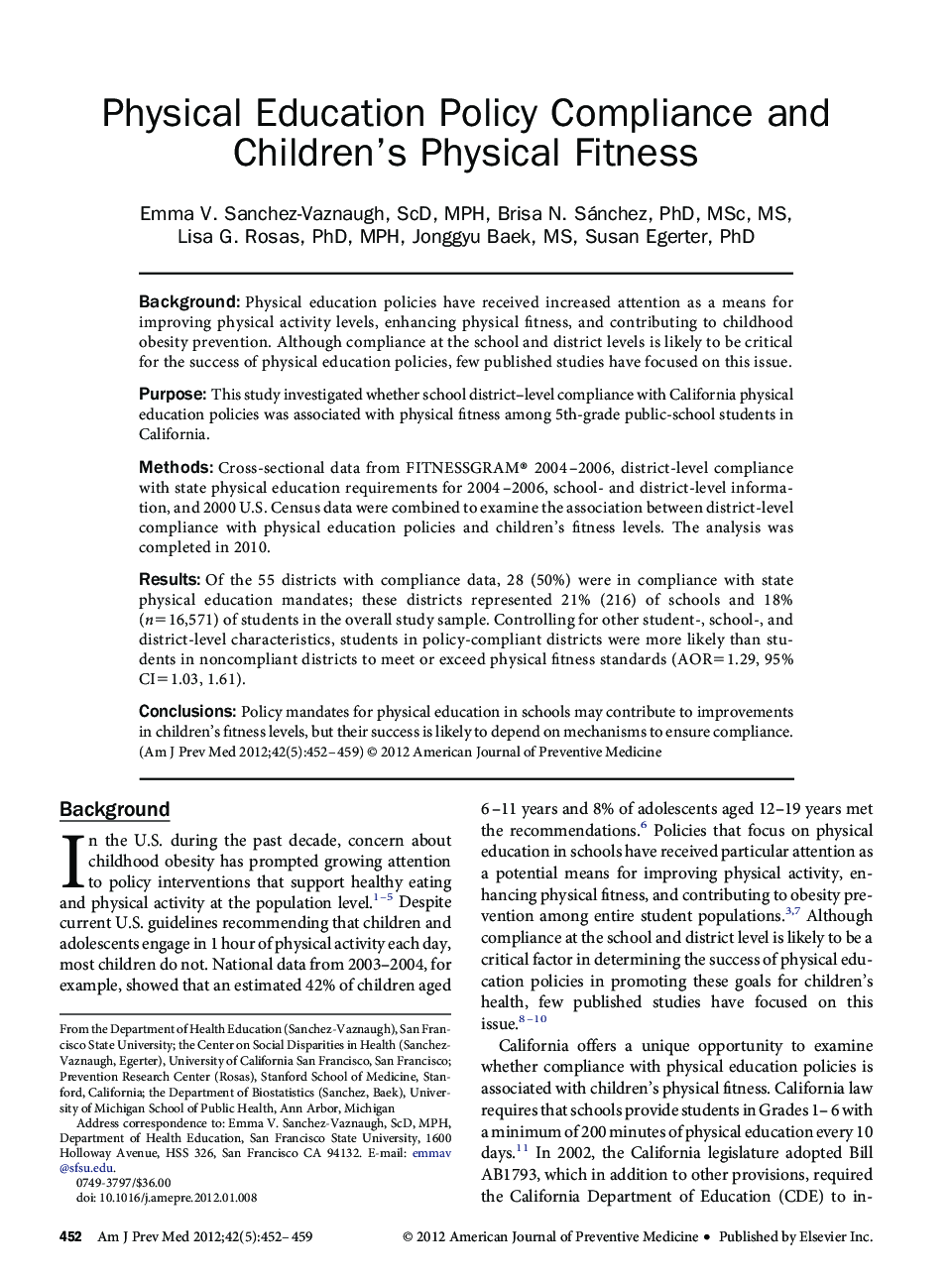| Article ID | Journal | Published Year | Pages | File Type |
|---|---|---|---|---|
| 4192551 | American Journal of Preventive Medicine | 2012 | 8 Pages |
BackgroundPhysical education policies have received increased attention as a means for improving physical activity levels, enhancing physical fitness, and contributing to childhood obesity prevention. Although compliance at the school and district levels is likely to be critical for the success of physical education policies, few published studies have focused on this issue.PurposeThis study investigated whether school district–level compliance with California physical education policies was associated with physical fitness among 5th-grade public-school students in California.MethodsCross-sectional data from FITNESSGRAM® 2004–2006, district-level compliance with state physical education requirements for 2004–2006, school- and district-level information, and 2000 U.S. Census data were combined to examine the association between district-level compliance with physical education policies and children's fitness levels. The analysis was completed in 2010.ResultsOf the 55 districts with compliance data, 28 (50%) were in compliance with state physical education mandates; these districts represented 21% (216) of schools and 18% (n=16,571) of students in the overall study sample. Controlling for other student-, school-, and district-level characteristics, students in policy-compliant districts were more likely than students in noncompliant districts to meet or exceed physical fitness standards (AOR=1.29, 95% CI=1.03, 1.61).ConclusionsPolicy mandates for physical education in schools may contribute to improvements in children's fitness levels, but their success is likely to depend on mechanisms to ensure compliance.
